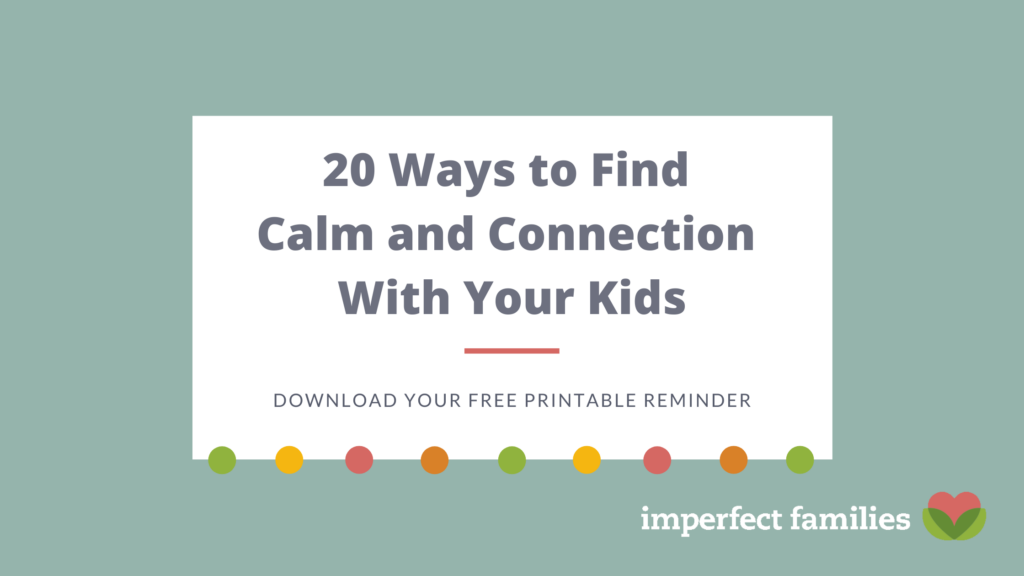
Affiliate links are used in this post.
Your daughter slams her backpack on the table and rustles through the fridge for a snack.
You know something’s not right, but when you ask, she responds with, “Nothing.”
Ugh.
Why can’t she just tell you what’s going on?
Unfortunately, thoughts and feelings can be complicated. They can leave your child feeling confused and overwhelmed. And, without practice, your child may have no idea how to put this jumbled mix of emotions and thoughts into words.
Empower your kids by teaching them a little about thoughts and feelings, how they impact daily life, and how to communicate them respectfully.
10 Things Your Child Needs to Know About Thoughts and Feelings
1. Thoughts and Feelings are Connected.
Rather than thinking about thoughts and feelings separately, let’s explore how they impact each other.
For example, pretend that you’re struggling with homework. Your thoughts may sound like: “Ugh! Why can’t I get this? All the other kids understand. I’m so dumb!” Your feelings are going to reflect these thoughts, making you feel frustrated, downcast, irritated, annoyed, or maybe even depressed.
It can work the other way too!
Let’s say you just scored the winning goal for your hockey team. You’re feeling pretty awesome in this moment, so your thoughts may reflect this, “Wow! That was so cool! I love hockey! Go team!”
2. Thoughts and Feelings Come and Go.
Big feelings can be overwhelming. Thoughts can be scary. Thankfully, they are both temporary.
Your child may be “afraid” to cry because they are worried the tears will never stop. Or, they may be cautious to talk about something because they are worried that they will think about it forever.*
Sometimes it’s helpful to imagine your thoughts or feelings floating along on clouds or sailing around in a boat. They come into our view, we think them or feel them, and then they pass by.
(*If your child gets “stuck” on a thought or feeling, or seems to feel pressure to continue thinking about something, consider seeking support from a mental health professional.)
3. Thinking or Feeling Something Doesn’t Make it True.
It’s easy to convince ourselves that something is accurate simply because we think or feel that it is!
Your brain is searching for ways to make sense of incomplete information. So, when you see that long, squiggly thing on the hiking path ahead of you, your brain is going to send the warning: “Snake!” Even if a more logical conclusion would be: “Don’t panic, it’s just a stick!” Yep, sometimes your brain can be wrong!
It’s helpful to do a little check-in from time to time, especially when feeling a big feeling or thought. Is it true? How true is it? What other things are also true? What thoughts would be more accurate?
4. Feelings Can Be Mixed Up.
As your children grow, they will be able to hold more than one thought at a time. Which means that, rather than being hyper-focused on one thought or idea, they can experience a number of different feelings at once!
This can be really scary and overwhelming at first.
Start by identifying and exploring a variety of feelings. Show how they look on someone’s face or how they sound in a sentence. Then, use this simple visual representation to help your child see and talk about their mixed-up feelings.
5. Feelings Can Be Physical.
Emotion charts and feeling lists are a great place to start, and it’s important not to stop there.
Talk about how different feelings impact the body. Anxiety may feel like butterflies in your stomach. Anger may feel like clenched fists. Sadness may feel like muscle aches or sluggishness.
Have your child draw a stick figure or an outline of a person. Then, ask them where they feel different feelings in their body. Encourage them to use colors or words to describe these physical symptoms.

6. Feelings Can Be Surprising.
It doesn’t take much to trigger a feeling – something someone says, how someone looks at you, a song on the radio – can all hit you from out of nowhere.
Often, we are so rushed, distracted, or disconnected from our thoughts and feelings that we can’t make the connection. Suddenly, we’re feeling sad or angry, and we have no idea why.
Help your child slow down and take a deep breath. Walk them backward, to the time when the feeling popped up and see if they can make any connections. This is not an easy task, and it may be more than your child is able to do.
At the very least, remind them that it’s normal for feelings to “sneak up” without warning, and offer to listen if they want to talk it through.
7. “Bad” Thoughts and Feelings Are Normal.
Shame is a powerful force. It tells us that we are not worthy of being loved and accepted, or that we are flawed and therefore, unlovable.
Break through shame by giving your child “permission” to think “bad” thoughts.
It’s normal to be jealous of a friend’s new bike and to secretly be happy when it gets a scratch on the new shiny paint. It’s normal to feel proud that you got a better score on your math test than the best math student in your class.
When your child feels less ashamed, they are freer to talk about these thoughts and feelings with you.
8. You Can’t Control Other’s Feelings.
Even though it’s common in our culture to say things like, “You make me so mad,” each person is responsible for their own thoughts and feelings.
“I-messages” are a great way to help your child sort through what they can control, and what they can’t. I-messages use the formula: “I feel…When you…Because…” Then, you can end with “I wish…” or “I need…”
When a big feeling shows up, help your child change the wording from “You…” to “I feel…” When they hear a friend say “You made me feel…” help your child be empathetic to what the other child was probably feeling.
9. Feelings Can Be Managed.
In the swirl of mixed emotions and surprising emotions, it’s easy to wonder if you’re going crazy.
Put your child’s mind at ease by practicing calming and coping skills.
Don’t wait until emotions are at their peak to start talking about taking deep breaths. Add deep breathing practice into your everyday routine. Listen to visualizations or relaxation meditations together so your child starts to learn which ones “work” better than others.
Nee more coping and calming techniques? This book is a great resource!
10. Talking Out loud Helps.
Thoughts and feelings can be powerful.
When they are trapped in your child’s mind, “small” things can grow bigger and bigger.
Encourage your child to name their feelings. Saying, “I am MAD!” out loud actually decreases the intensity of the feeling inside.
Position yourself as a compassionate listener – rather than problem solver or disciplinarian. When your child sees you as a “safe” place to explore thoughts and feelings, they will feel empowered, rather than controlled or overwhelmed by them.
This is not always an easy place to be, so take lots of deep breaths, and pause – giving yourself time to check your own thoughts and feelings before you respond!
How Can I Help?
Talking about thoughts and feelings can be a monumental task for some parents. Maybe you can relate. No problem! You don’t have to do this alone. Online Parent Coaching is a great place to talk through your challenges, a safe place to vent, and a fantastic opportunity to slow down and be intentional about your parenting. Learn more about Parent Coaching here.
Print This List!
Enter your email address to download a FREE printable reminder of these 10 tips from Nicole Schwarz, LMFT & Parent Coach! Plus, you'll join my mailing list and get parenting tips sent to your inbox.
By signing up to receive this freebie, you agree to my Disclosure and Privacy Policy.



Comments have been turned off to retain the privacy of all families. If you have a question or comment on the topic, you're always welcome to contact me.